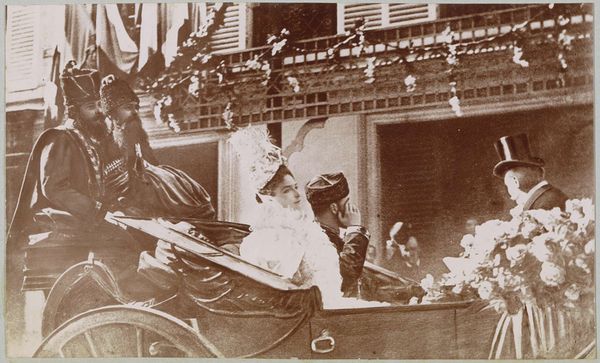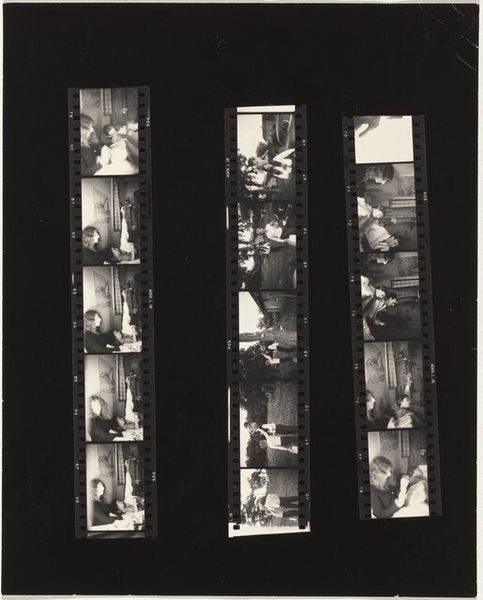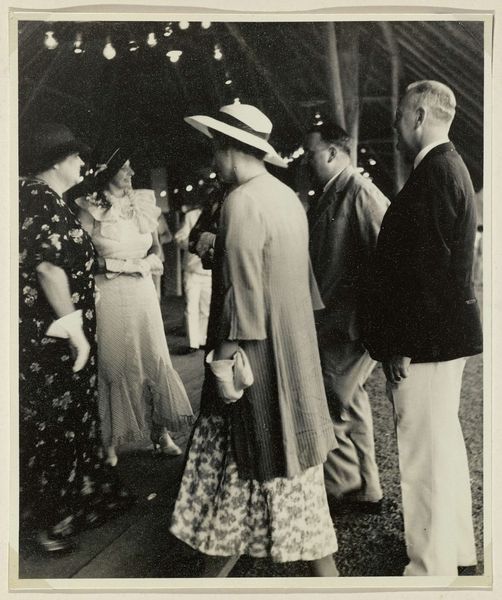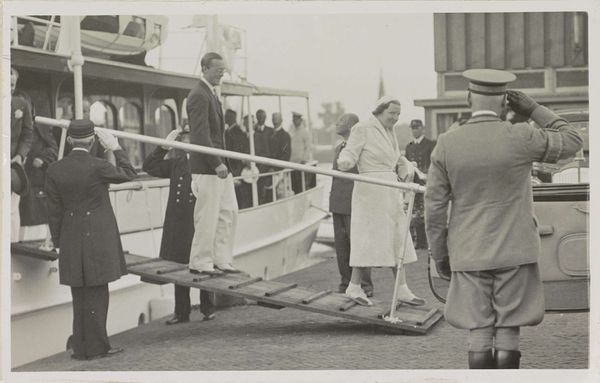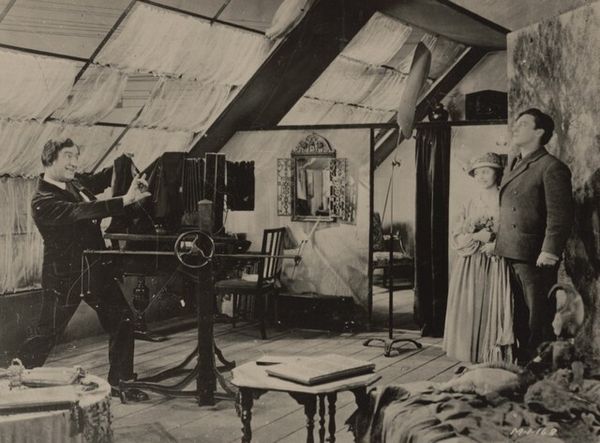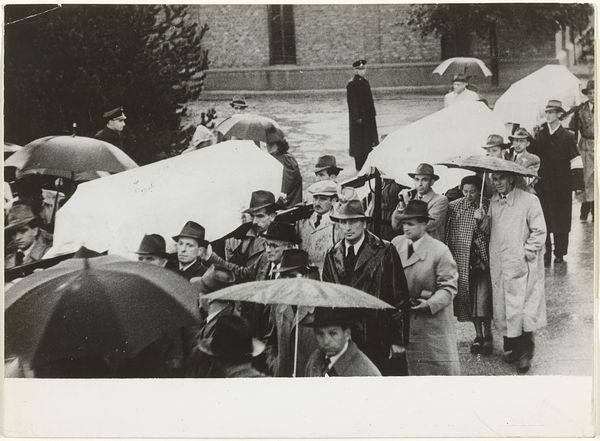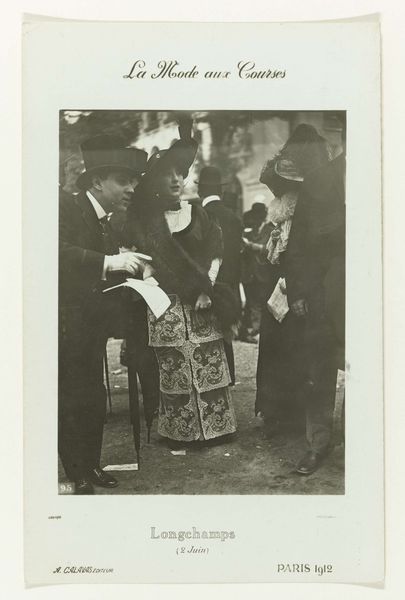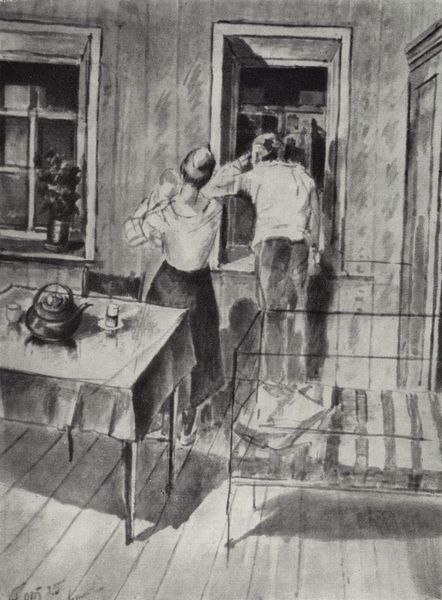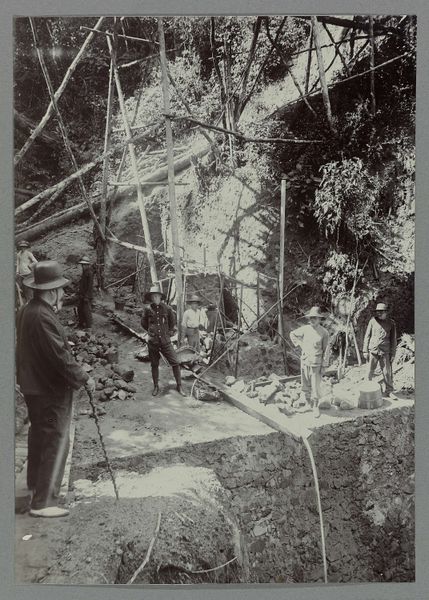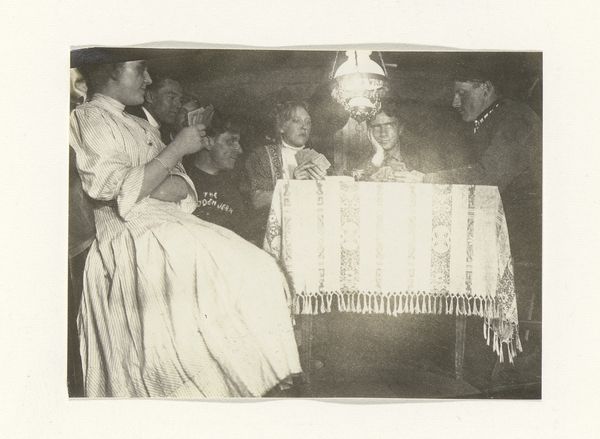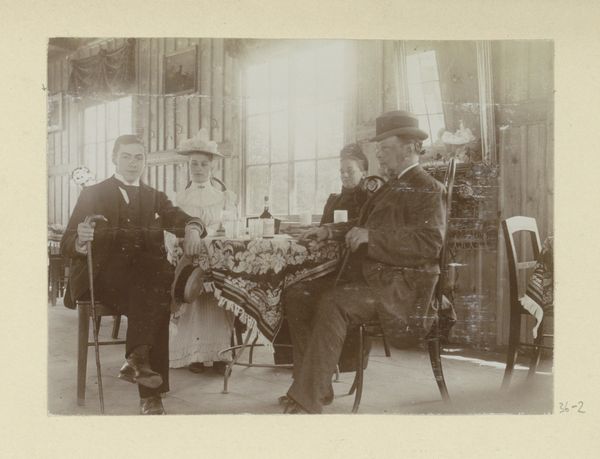
Bezoek van Juliana, koningin der Nederlanden, en Bernhard van Lippe-Biesterfeld aan het prinsenjacht Hr. Ms. 'Piet Hein' te Muiden op 28 augustus 1937 Possibly 1937 - 1938
0:00
0:00
Dimensions: height 105 mm, width 152 mm
Copyright: Rijks Museum: Open Domain
Curator: This gelatin-silver print, possibly dating to 1937 or 1938, captures the visit of Queen Juliana and Prince Bernhard to the yacht 'Piet Hein' in Muiden. The photographic print aesthetic renders a scene steeped in early 20th-century royalty. Editor: It’s a strikingly formal composition, isn’t it? The rigid lines of the masts contrasting with the garland’s gentle curves, framing the subjects with precision. Curator: Absolutely, and consider the socio-political context. This photograph likely served as propaganda, subtly reinforcing the image of the monarchy. Note the carefully staged scene—the craftsmanship of the vessel, the meticulous grooming of the royal couple; they represent Dutch industry and idealized societal order. Editor: Yes, the light and shadow contribute significantly. The sharp contrast accentuates the architectural detail of the yacht and the royal figures, elevating their status within the frame. It’s all very considered. The black-and-white photography lends itself to focus on shapes, forms, tonal variation and creating stark distinctions. Curator: We also have to consider the materials. Gelatin-silver prints were common for news and archival photography, valued for their reproducibility and stability. Its presence here reminds us of mass media’s burgeoning role in shaping public opinion. The creation of such images speaks directly to an intended consumer, in this case, the Dutch citizen. Editor: Precisely. Semiotically speaking, each element - the ship, the royals, even the garland—functions as a signifier contributing to the overarching message of stability and regal celebration. Curator: Right. Understanding the material history and intended audience is key to understanding its social function and how it actively constructs cultural values through documenting what it captures on the scene. Editor: And seeing those carefully constructed visual components truly enriches the viewer’s understanding of the subjects' posture and bearing and their symbolic weight. Curator: Indeed, examining its purpose helps us better appreciate the visual rhetoric employed in maintaining cultural power during the time. Editor: A worthwhile intersection between form and content that gives meaning to historical context!
Comments
No comments
Be the first to comment and join the conversation on the ultimate creative platform.
